2019-04-04 - Nº 205
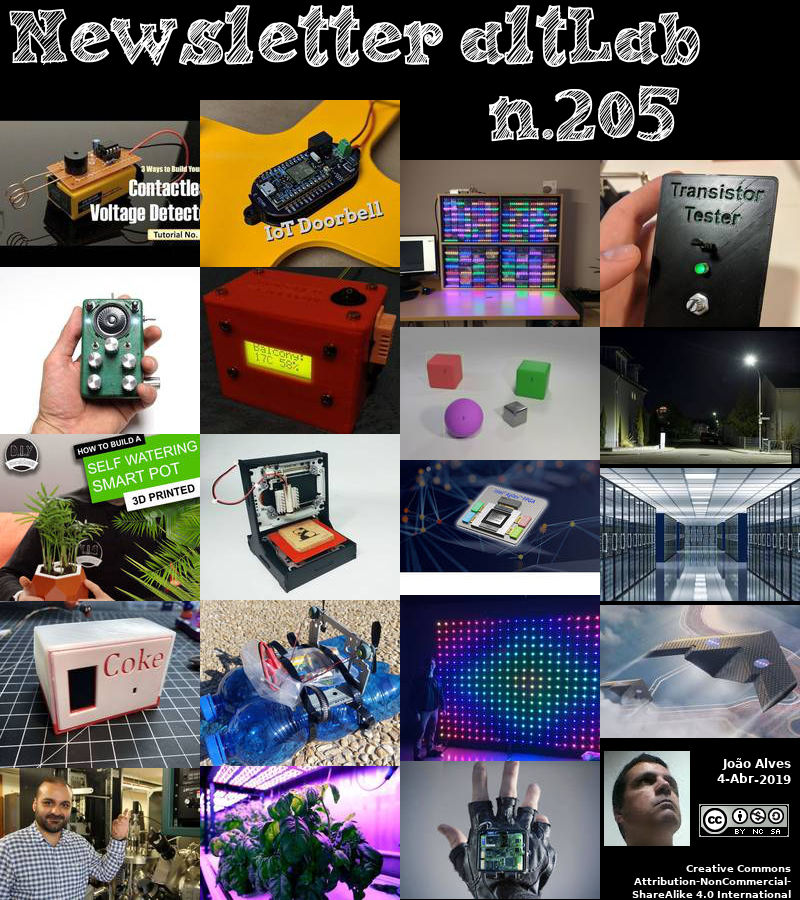
Editorial
Esta é a Newsletter Nº 205 que se apresenta com o mesmo formato que as anteriores. Se gostar da Newsletter partilhe-a!
Todas as Newsletters encontram-se indexadas no link.
Esta Newsletter tem os seguintes tópicos:
Faz hoje anos que nascia, em 1821, Linus Yale Jr.. Este inventor norte-americano e fabricante de fechaduras, ficou conhecido pela sua invenção da fechadura de cilindro conhecida por seu nome. O seu primeiro negócio de fechaduras, estabelecido em Shelburne Falls, Massachusetts (início da década de 1840), começou com a produção de fechaduras bancárias, como a Yale Infallible Bank Lock (1851). Ele introduziu o bloqueio de combinação (c.1862). O seu conhecimento especializado deu-lhe fama por poder abrir as fechaduras "invioláveis" dos seus concorrentes. Ele patenteou pela primeira vez a fechadura da porta do cilindro do tambor em 1861. O seu modelo aprimorado de 1865 continua a ser um projecto seguro usado nas fechaduras de Yale de hoje. Ele começou a produção em massa deste tipo de tranca, e com parceiros, fundou a Yale Lock Manufacturing Co. no último ano de sua vida (1868).
Faz também anos hoje que nascia, em 1823, Carl Wilhelm Siemens. Este engenheiro e inventor germano-inglês inventou o “sistema regenerativo” de uso de gases residuais para pré-aquecer gases combustíveis, para o forno aberto usado na fabricação de aço. Ele também foi importante na indústria telegráfica, pioneira no cabo submarino. Ele ajudou na engenharia da linha telegráfica de Londres-Calcutá (1869), uma conquista marcante nas comunicações. O seu nome no nascimento foi Carl Wilhelm Siemens, o irmão mais novo de Ernst Werner Siemens (mais tarde conhecido como Werner von Siemens, que fundou o que hoje é a multinacional Siemens). Carl visitou pela primeira vez a Inglaterra como agente de seu irmão para introduzir um dispositivo de eletrodeposição.
Faz igualmente anos hoje que nascia, em 1846, Raoul Pictet. Este químico suíço foi pioneiro da criogenia. O seu interesse original era a produção artificial de gelo (para refrigeração) e levou-o a estudar a produção de temperaturas extremamente baixas. Ele produziu oxigénio líquido, trabalhando independentemente do cientista francês Louis Paul Cailletet, que também é creditado com sua descoberta em 1877. No entanto, Pictet usou equipamentos mais elaborados e foi capaz de produzir maiores volumes de gases liquefeitos. Pictet usou um método em cascata, no qual ele evaporou o dióxido de enxofre líquido para liquefazer o dióxido de carbono, que por sua vez era permitido evaporar e arrefecer o oxigénio abaixo de sua temperatura crítica. O oxigénio pode então ser liquefeito por pressão. Isto também foi mais fácil de aplicar a outros gases.
Faz também anos hoje que nascia, em 1949, Shing-Tung Yau. Este matemático nascido na China recebeu a Medalha Fields em 1982 pelo seu trabalho em equações diferenciais parciais e geometria diferencial. O seu trabalho também tem aplicações em topologia, geometria algébrica, teoria de representação e relatividade geral. Trabalhando em colaboração com Richard M. Schoen, Yau resolveu um problema em aberto de longa data na teoria da relatividade, mostrando a positividade da massa no espaço-tempo. Como consequência, Schoen e Yau foram capazes de dar a primeira demonstração rigorosa de como os buracos negros podem ser formados por causa da condensação da matéria. Um buraco negro possui um campo gravitacional tão forte que nenhuma matéria ou radiação pode escapar a ele.
Por fim, faz anos hoje que nascia, em 1950, Steven Sasson. Este engenheiro electrotécnico e inventor norte-americano construiu a primeira câmara digital enquanto trabalhava na Kodak. O seu supervisor pediu que ele explorasse a aplicação de um dispositivo electrónico de carga acoplada (CCD) como um sensor de imagem numa câmara. O protótipo experimental que ele construiu era do tamanho de uma torradeira e pesava quase 4 quilos. Ela tirou a primeira foto digital em Dezembro de 1975, convertendo a imagem num sinal electrónico que foi digitalizado e armazenado numa fita de cassete. Mantendo-se concentrada no tradicional filme fotográfico de celulóide que há muito tempo era o negócio gigantesco da Kodak, só em 1996 é que a empresa começou a vender câmaras digitais no mercado. Infelizmente para a empresa, ela não foi apenas eclipsada por outros fabricantes de câmaras digitais, mas a mudança tecnológica destruiu o seu negócio de filmes fotográficos, apesar de ter acumulado 1.000 patentes de imagens digitais.
Nesta semana que passou ficámos a saber que a Amazon tenciona lançar para o espaço cerca de 3,236 satélites para criar uma rede que possibilite disponibilizar uma rede Internet de alta velocidade global. Conhecido como Project Kuiper, o movimento representa a mais recente ambição espacial de Jeff Bezos.
Na Newsletter desta semana apresentamos diversos projetos de maker. É apresentada a revista micro:mag nº4.
 João Alves ([email protected])
João Alves ([email protected])
O conteúdo da Newsletter encontra-se sob a licença  Creative Commons Attribution-NonCommercial-ShareAlike 4.0 International License.
Creative Commons Attribution-NonCommercial-ShareAlike 4.0 International License.
Novidades da Semana

Amazon wants to launch thousands of satellites so it can offer broadband internet from space
"“Project Kuiper” is Amazon’s plan to launch 3,236 satellites to build a network to provide global high-speed internet. The move represents the latest space ambition from Jeff Bezos. There’s a race among several major players to build a next-generation broadband network in space, including Elon Musk’s SpaceX and SoftBank-backed OneWeb. Amazon is planning to build a network of more than 3,000 satellites federal filings reveal, in an ambitious attempt to provide global internet access. Known as Project Kuiper, the move represents the latest space ambition from Jeff Bezos. Amazon has previously announced its cloud business will build a network of satellite facilities on Earth and Bezos’ space venture Blue Origin continues to move closer to launching space tourists." [...]
Outras Notícias
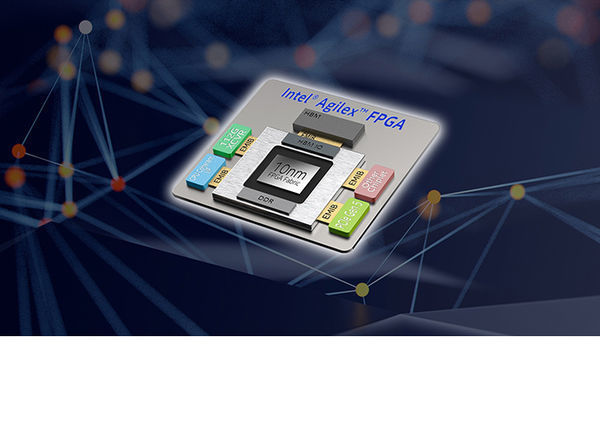
Intel Driving Data-Centric World with New 10nm Intel Agilex FPGA Family
"Intel announced today a brand-new product family, the Intel® Agilex™ FPGA. This new family of field programmable gate arrays (FPGA) will provide customized solutions to address the unique data-centric business challenges across embedded, network and data center markets. “The race to solve data-centric problems requires agile and flexible solutions that can move, store and process data efficiently. Intel Agilex FPGAs deliver customized connectivity and acceleration while delivering much needed improvements in performance and power1,2 for diverse workloads.” –Dan McNamara, Intel senior vice president, Programmable Solutions Group Why It’s Important: Customers need solutions that can aggregate and process increasing amounts of data traffic to enable transformative applications in emerging, data-driven industries like edge computing, networking and cloud. Whether it’s through edge analytics for low-latency processing, virtualized network functions to improve performance, or data center acceleration for greater efficiency, Intel Agilex FPGAs are built to deliver customized solutions for applications from the edge to the cloud. Advances in artificial intelligence (AI) analytics at the edge, network and the cloud are compelling hardware systems to cope with evolving standards, support varying AI workloads, and integrate multiple functions." [...]

Advanced Chipset from STMicroelectronics Brings New 100W Power-over-Ethernet Standard to Connectivity and Smart-Building Applications
"A new chipset from STMicroelectronics lets users quickly build reliable and space-efficient Powered Devices (PDs) to take advantage of the latest IEEE 802.3bt Power-over-Ethernet (PoE) specification. The PM8804 and PM8805 provide the PoE-converter circuitry for PDs up to class-8, which defines a usable power budget of 71 Watts. The chipset saves space, enhances reliability, and cuts time to market for next-generation connectivity equipment including 5G “small cells,” WLAN access points, switches, and routers. ST’s new PoE chipset also targets smart-building and smart-office applications such as IP cameras, access-control systems, display panels, lighting, curtain or shutter controllers, video-call systems, IP phones, and tabletop consoles. The PM8804 implements a complete PWM controller for a 48V isolated flyback or forward converter, including dual low-side gate drivers for high-efficiency forward active-clamp topologies. The operating frequency is selectable up to 1MHz, allowing the use of small external filter and decoupling components for high power density." [...]
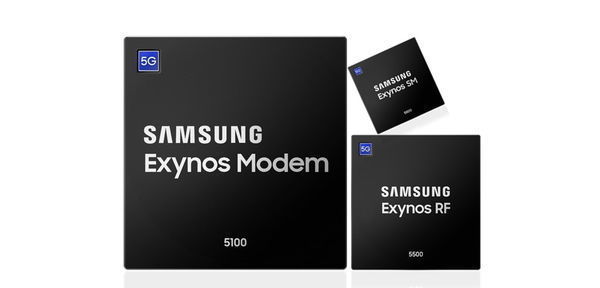
Samsung's Multi-Mode Exynos Chipsets Help Bring the 5G Era to Mobile Consumers
"Samsung’s 5G modem and RF chips are currently in mass production for the latest premium mobile devices Samsung Electronics, a world leader in advanced semiconductor technology, today announced that its 5G communication solutions are in mass production for the latest premium mobile devices. The 5G multi-mode chipsets include the previously-introduced Exynos Modem 5100 as well as a new single-chip radio frequency transceiver, the Exynos RF 5500, and supply modulator solution, the Exynos SM 5800, all supporting 5G New Radio (5G-NR) sub-6-gigahertz (GHz) spectrum and legacy radio access technologies that provide mobile device manufacturers with optimum network communication solutions for the 5G era. “Samsung has been an innovator in mobile communication technologies with a strong portfolio of market-proven solutions, and we are well-prepared to extend our leadership into 5G,” said Inyup Kang, president of System LSI Business at Samsung Electronics. “Our multi-mode solutions, the Exynos Modem 5100, Exynos RF 5500 and Exynos SM 5800 will together enable powerful yet energy-efficient 5G performance along with the network versatility that allows users to stay connected wherever they are.” Exynos Modem 5100 is Samsung’s first 5G modem solution that had completed preparations for commercialization in August, 2018, with a successful over-the-air (OTA) 5G-NR data call test. The modem supports virtually all networks from 5G’s sub-6GHz and mmWave spectrums to 2G GSM/CDMA, 3G WCDMA, TD-SCDMA, HSPA and 4G LTE networks in a single chip. For reliable and power-efficient performance, the modem is paired with RF and supply modulator solutions, Exynos RF 5500 and Exynos SM 5800 respectively." [...]
Ciência e Tecnologia

Controlling pressure-driven ionic flow by voltage at molecular scale
"Similar to our computers which handle electrons to perform the calculations and logics, all the circuitry in living beings is based on the transport of ions, such as sodium, chloride, calcium, etc. Nature exploits incredibly subtle transport of these elementary charges and an artillery of ion channels to perform advanced functions by manipulating the - often exotic - behaviour of ion transport at molecular scales. Achieving such features in artificial channels remains a considerable challenge. As published in Nature, Researchers from the Micromegas team at the Physics Department at ENS, Paris in collaboration with the Condensed Matter Physics laboratory and National Graphene Institute at The University of Manchester, have been able to highlight mechano-sensitive properties of ion transport in few angstroms thick artificial channels. Just over two years ago, Manchester researchers led by Dr Radha Boya and Prof Sir Andre Geim showed that by stacking two-dimensional atomic layers similar to stacking bricks of Lego, it is indeed possible to assemble molecular and smooth channels at the atomic scale in a controlled manner. The atomic layers used for building the channel are held together by so-called van der Waals forces." [...]
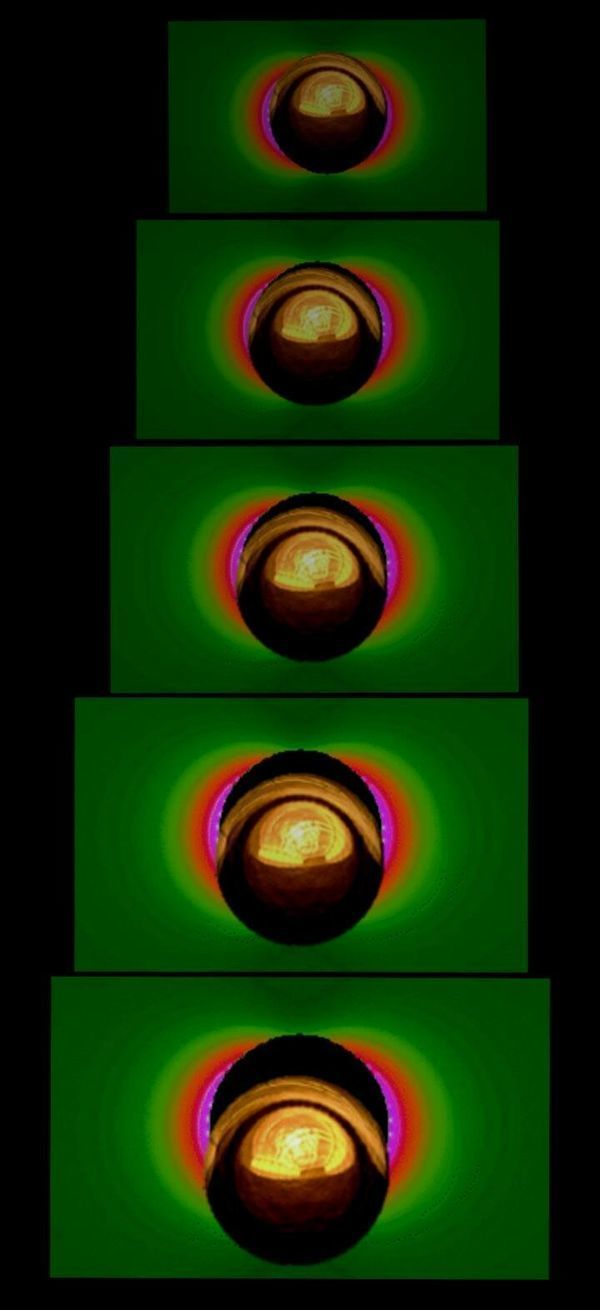
Quantum physics and origami for the ultimate get-well card
"Paper-based diagnostic tests are cheap, convenient and biodegradable. However, their use is limited by conventional dyes—which are not bright enough to show trace amounts of analyte, are prone to fading, and can be environmentally toxic. Now researchers are using quantum physics to overcome these limitations, says a review published in Frontiers in Bioengineering and Biotechnology. The bizarre optical properties of tiny metal particles—smaller than light waves—can be captured on paper to detect even a single target molecule in a test sample. These hyper-sensitive testing devices could be assembled and customized at the point of use in low-resource environments, with virtually limitless applications spanning medicine, forensics, manufacturing and environmental safety. "A new generation of paper-based analytical devices is being developed, which use metal nanoparticles for analyte identification," says lead author Dr. Eden Morales-Narváez of the Center for Optics Research in Mexico." [...]
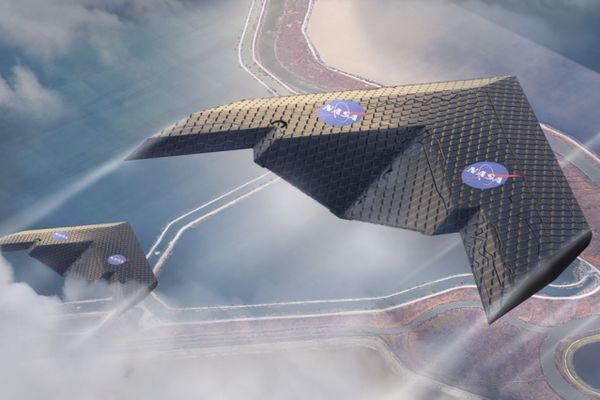
MIT and NASA engineers demonstrate a new kind of airplane wing
"Assembled from tiny identical pieces, the wing could enable lighter, more energy-efficient aircraft designs. A team of engineers has built and tested a radically new kind of airplane wing, assembled from hundreds of tiny identical pieces. The wing can change shape to control the plane’s flight, and could provide a significant boost in aircraft production, flight, and maintenance efficiency, the researchers say. The new approach to wing construction could afford greater flexibility in the design and manufacturing of future aircraft. The new wing design was tested in a NASA wind tunnel and is described today in a paper in the journal Smart Materials and Structures, co-authored by research engineer Nicholas Cramer at NASA Ames in California; MIT alumnus Kenneth Cheung SM ’07 PhD ’12, now at NASA Ames; Benjamin Jenett, a graduate student in MIT’s Center for Bits and Atoms; and eight others. Instead of requiring separate movable surfaces such as ailerons to control the roll and pitch of the plane, as conventional wings do, the new assembly system makes it possible to deform the whole wing, or parts of it, by incorporating a mix of stiff and flexible components in its structure." [...]

Using machine learning to make better estimations
"If you look under the hood of the internet, you’ll find lots of gears churning along that make it all possible. For example, take a company like AT&T. They have to intimately understand what internet data is going where so that they can better accommodate different levels of usage. But it isn’t practical to precisely monitor every packet of data, because companies simply don’t have unlimited amounts of storage space. (Researchers actually call this the “Britney Spears problem,” named for search engines’ long-running efforts to tally trending topics.) Because of this issue, tech companies use special algorithms to roughly estimate the amount of traffic heading to different IP addresses." [...]

Stanford autonomous car learns to handle unknown conditions
"In order to make autonomous cars navigate more safely in difficult conditions – like icy roads – researchers are developing new control systems that learn from real-world driving experiences while leveraging insights from physics. Researchers at Stanford University have developed a new way of controlling autonomous cars that integrates prior driving experiences – a system that will help the cars perform more safely in extreme and unknown circumstances. Tested at the limits of friction on a racetrack using Niki, Stanford’s autonomous Volkswagen GTI, and Shelley, Stanford’s autonomous Audi TTS, the system performed about as well as an existing autonomous control system and an experienced racecar driver. “Our work is motivated by safety, and we want autonomous vehicles to work in many scenarios, from normal driving on high-friction asphalt to fast, low-friction driving in ice and snow,” said Nathan Spielberg, a graduate student in mechanical engineering at Stanford and lead author of the paper about this research, published March 27 in Science Robotics. “We want our algorithms to be as good as the best skilled drivers – and, hopefully, better.” While current autonomous cars might rely on in-the-moment evaluations of their environment, the control system these researchers designed incorporates data from recent maneuvers and past driving experiences – including trips Niki took around an icy test track near the Arctic Circle. Its ability to learn from the past could prove particularly powerful, given the abundance of autonomous car data researchers are producing in the process of developing these vehicles." [...]
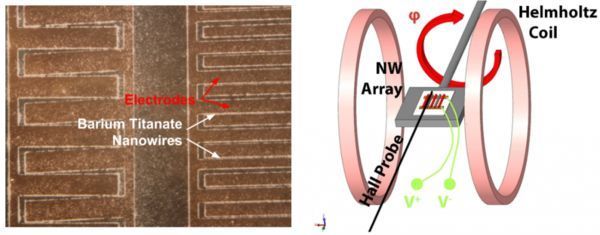
Tiny Sensors, Big Potential
"The electrical energy from batteries powers not only the ignition system that turns the engine and moves electric vehicles but also powers almost every sensing feature of today’s automobiles. Electricity turns on the car headlights for night travel, rolls the windows up and down, senses numerous actions within the car to keep drivers aware and alert to their environment. Today’s autos come with many sensors – “door ajar”, “seatbelt not fastened”, “low tire pressure”, “engine rpm’s”, “obstacle proximity”, etc. Newer autonomous sensors can even alert the engine to slow down and stop if the driver is inattentive or incapacitated. Each sensor requires just a little bit of energy from the car’s battery, but all those little bits add up; and, as the industry begins to focus more on electric vehicles, networked vehicles, and passenger infotainment features, the number of sensors may increase significantly. To deal with the problem of battery depletion, UF Engineers have developed a new type of sensor that creates its own energy, extending battery life of automobiles." [...]
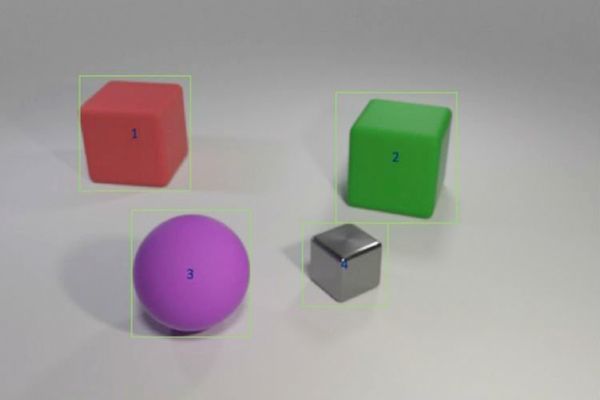
Teaching machines to reason about what they see
"Researchers combine statistical and symbolic artificial intelligence techniques to speed learning and improve transparency. A child who has never seen a pink elephant can still describe one — unlike a computer. “The computer learns from data,” says Jiajun Wu, a PhD student at MIT. “The ability to generalize and recognize something you’ve never seen before — a pink elephant — is very hard for machines.” Deep learning systems interpret the world by picking out statistical patterns in data. This form of machine learning is now everywhere, automatically tagging friends on Facebook, narrating Alexa’s latest weather forecast, and delivering fun facts via Google search. But statistical learning has its limits." [...]

Researchers uncover additional evidence for massive solar storms
"Solar storms can be far more powerful than previously thought. A new study has found evidence for the third known case of a massive solar storm in historical times. The researchers believe that society might not be sufficiently prepared if a similar event were to happen now. Our planet is constantly being bombarded by cosmic particles. However, at times the stream of particles is particularly strong when a solar storm sweeps past. Solar storms are made up of high-energy particles unleashed from the sun by explosions on the star’s surface." [...]
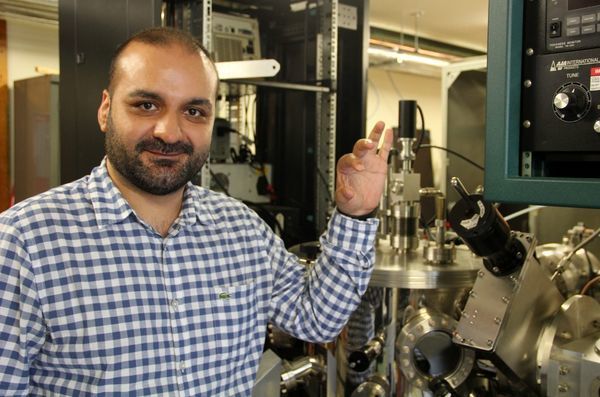
New plasma technology creates 'smart' windows
"Windows that efficiently conserve energy by responding to light, heat and other environmental factors may soon become a reality thanks to a team of environmentally aware, plasma surface engineering experts at the University of Sydney. The rise of energy consumption in recent decades has led to an increasing demand for renewable energy and energy-saving systems. In response to this growing worldwide need, researchers have developed a more efficient and effective smart window that can block the flow of light and heat as required. The study, which was led by Dr Behnam Akhavan from The Applied Plasma and Surface Engineering Research Group, focused on responding to the rise of energy consumption by using thin plasma fabricated coatings which were applied to glass windows. The new technology consists of electrochromic coatings made of transparent materials that darken in colour with the application of a small electrical voltage. Produced for the first time using a new plasma sputtering technology, the coatings are made up of a layer of silver that is approximately 10,000 times thinner than the width of human hair, placed in between two nano-thin layers of tungsten oxide." [...]
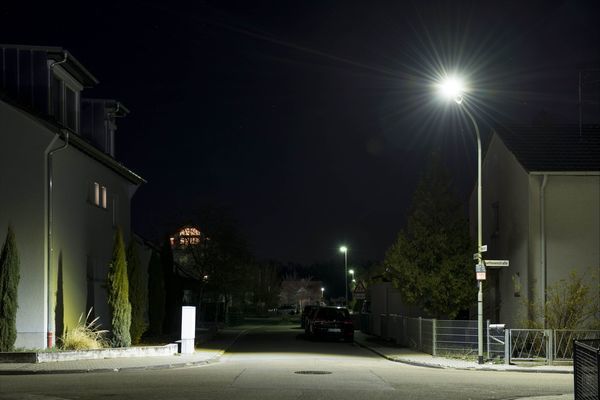
Highly Economical LED Street Lights Tested in Practice
"Special Interconnection of Many LEDs – Implementation in Series Under Way – Far Reduced Costs of Public Lighting Researchers of Karlsruhe Institute of Technology (KIT) have developed a novel, even more economical LED street light. They replaced conventional high-performance diodes by a special array of weaker LEDs and, thus, succeeded in reducing power consumption by another 20%. As a result, CO2 emission is decreased and municipalities might save millions of power costs. Pfalzwerke Netz AG, the local utility company, for the first time equipped street lights with the new light heads in the municipality of Maxdorf, Rhineland Palatinate. “We have succeeded again in significantly increasing the efficiency and service life of our lamps compared to conventional LEDs,” says Michael Heidinger of KIT’s Light Technology Institute (LTI). He designed a smart circuit that compensates aging and failure of individual light-emitting diodes." [...]

Advance boosts efficiency of flash storage in data centers
"New architecture promises to cut in half the energy and physical space required to store and manage user data. MIT researchers have designed a novel flash-storage system that could cut in half the energy and physical space required for one of the most expensive components of data centers: data storage. Data centers are server farms that facilitate communication between users and web services, and are some of the most energy-consuming facilities in the world. In them, thousands of power-hungry servers store user data, and separate servers run app services that access that data. Other servers sometimes facilitate the computation between those two server clusters. Most storage servers today use solid-state drives (SSDs), which use flash storage — electronically programmable and erasable memory microchips with no moving parts — to handle high-throughput data requests at high speeds." [...]

The future of agriculture is computerized
"Machine learning can reveal optimal growing conditions to maximize taste and other features. What goes into making plants taste good? For scientists in MIT’s Media Lab, it takes a combination of botany, machine-learning algorithms, and some good old-fashioned chemistry. Using all of the above, researchers in the Media Lab’s Open Agriculture Initiative report that they have created basil plants that are likely more delicious than any you have ever tasted. No genetic modification is involved: The researchers used computer algorithms to determine the optimal growing conditions to maximize the concentration of flavorful molecules known as volatile compounds. But that is just the beginning for the new field of “cyber agriculture,” says Caleb Harper, a principal research scientist in MIT’s Media Lab and director of the OpenAg group." [...]
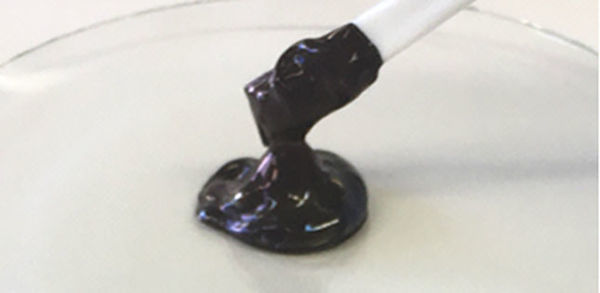
Copper-Based Alternative for Next-Generation Electronics
"Japanese scientists have developed a technique to transform a copper-based substance into a material that mimics properties of precious and pricey metals, such as gold and silver. The new medium, made of copper nanoparticles (very small copper-based structures) has promising applications in the production of electronic devices that would otherwise depend on expensive gold and silver counterparts. It is also suitable in the fabrication of electronic components using printing technologies that are recognized as environmentally friendly production methods. The study was published on January 29 in Scientific Reports, an online open access journal managed by Nature. The development of the Internet of Things (IoT) has quickly increased the demand for thin and wearable electronic devices. For example, IoT depends on communication between devices, which requires antennas that have so far required expensive gold and silver-based metal composites." [...]

Cryptography That Can't Be Hacked
"Researchers have just released hacker-proof cryptographic code — programs with the same level of invincibility as a mathematical proof. rogrammers are human, but mathematics is immortal. By making programming more mathematical, a community of computer scientists is hoping to eliminate the coding bugs that can open doors to hackers, spill digital secrets and generally plague modern society. Now a set of computer scientists has taken a major step toward this goal with the release today of EverCrypt, a set of digital cryptography tools. The researchers were able to prove — in the sense that you can prove the Pythagorean theorem — that their approach to online security is completely invulnerable to the main types of hacking attacks that have felled other programs in the past. “When we say proof, we mean we prove that our code can’t suffer these kinds of attacks,” said Karthik Bhargavan, a computer scientist at Inria in Paris who worked on EverCrypt." [...]
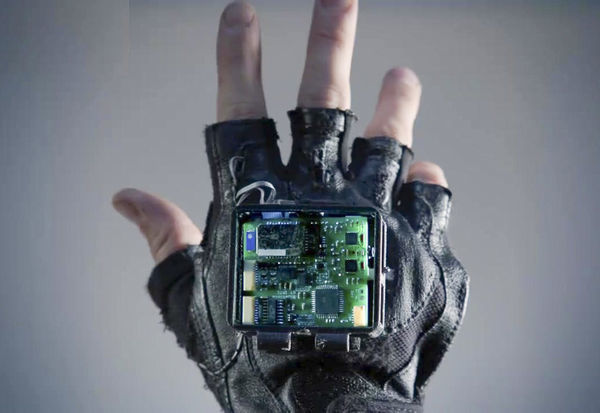
Stanford, Georgia Tech researchers build a glove to treat symptoms of stroke
"Strokes often have a devastating impact on something most of us rely heavily on in our daily lives – our hands. Now, Stanford researchers are collaborating on a vibrating glove that could improve hand function after a stroke. The most obvious sign someone has survived a stroke is usually some trouble speaking or walking. But another challenge may have an even greater impact on someone’s daily life: Often, stroke survivors lose sensation and muscle control in one arm and hand, making it difficult to dress and feed themselves or handle everyday objects such as a toothbrush or door handle. Now, doctors and engineers at Stanford and Georgia Tech are working on a novel therapy that could help more stroke survivors regain the ability to control their arms and hands – a vibrating glove that gently stimulates the wearer’s hand for several hours a day. Caitlyn Seim, a graduate student at Georgia Tech, started the project in the hope that the glove’s stimulation could have some of the same impact as more traditional exercise programs." [...]

Shrimp claw inspires new method of underwater plasma generation
"Texas A&M University researchers are looking to nature for inspiration in developing a new method of underwater plasma generation using shrimp as a model – a discovery which could provide significant improvements for actions ranging from water sterilization to drilling. Dr. David Staack, associate professor in the J. Mike Walker '66 Department of Mechanical Engineering, and Xin Tang, a Ph.D. candidate and graduate research assistant in the department, used 3D printing technology to replicate not only the physical shape of a snapping shrimp's claw, but also the complex mechanism through which it generates plasma. The team’s research was published March 15 in the online journal Science Advances. "Generally, when you look to nature, evolutionary pressure makes it so that nature is very efficient at doing things," Staack said. "I find it interesting that the shrimp has been doing intense shock waves, plasma chemistry and nanoparticle synthesis for millions of years." When the snapping shrimp – also known as the pistol shrimp – snaps its claw, it shoots out a jet of water fast enough to generate a bubble which, when it collapses, creates a loud noise and emits light." [...]
Documentação
A documentação é parte essencial do processo de aprendizagem e a Internet além de artigos interessantes de explorar também tem alguma documentação em formato PDF interessante de ler. Todos os links aqui apresentados são para conteúdo disponibilizado livremente pelo editor do livro.
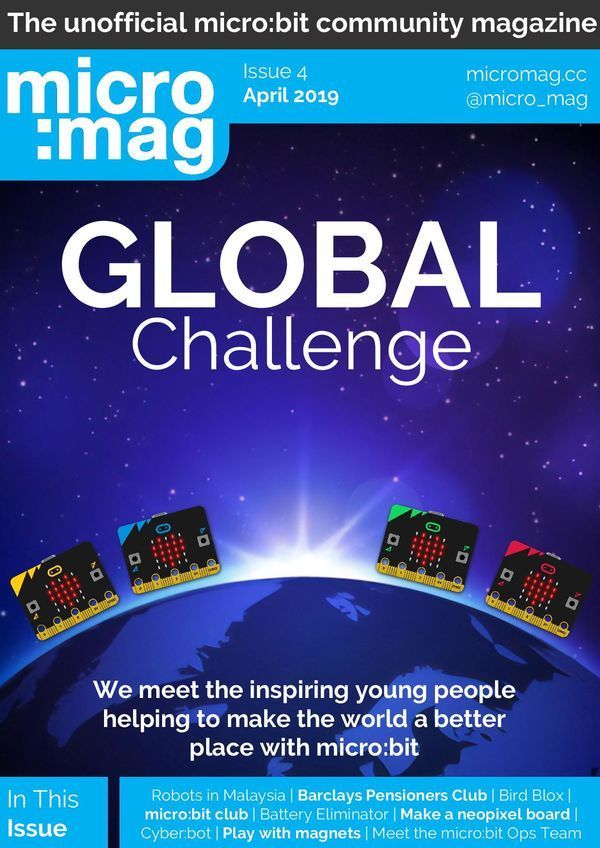
micro:mag issue 4
"Today, we’re excited to announce the release of micro:mag Issue 4! We’ve got an amazing Issue packed full of amazing articles by our awesome community. Here is a quick look at what we’ve got to offer. Enjoy Issue 4! Global Challenge This issues Cover feature is “Global Challenge”. In 2018, the Micro:bit Educational Foundation with Arm and World’s Largest Lesson challenged students aged 8-12 across the globe to consider how these Goals could change the lives of themselves and others and to design solutions to these Goals using the micro:bit." [...]
Projetos Maker
Diversos Projetos interessantes.
JALPIC One Development Board
"If you follow my Instructables projects you know that I am a big fan of the JAL programming language in combination with the PIC Microcontroller. JAL is a Pascal like programming language developed for the 8-bit PIC microcontrollers of Microchip. Most people know the Arduino using the ATMEL microcontroller. One of the nice things of an Arduino board is that you can program the microcontroller without the need of a separate programmer. This absence of the need for a programmer brought me to this project. I wanted to make an Arduino Uno like board for the PIC microcontroller developing the software for that board with in the JAL programming language." [...]

Word Clock Controlled by 114 Servos
"What has 114 LEDs and is always running? As you may know the answer is a word clock. What has 114 LEDs + 114 servos and is always moving? The answer is this servo controlled word clock. For this project I teamed up with a friend of mine which turned out to be a must because of the large effort of this build. In addition, my electronic and his mechanical skillset complemented each other quite well." [...]

Credit Card Sized Deauther With Oled Screen
"Fellow Secret Agents, here you have a Deauther: a very useful tool to keep in your pocket, maybe one day you need to disable a security camera, or a drone, or broadcast an emergency message.... Be aware of the legal implication: please use this tool responsibly and do not use it against others without their permission. " [...]
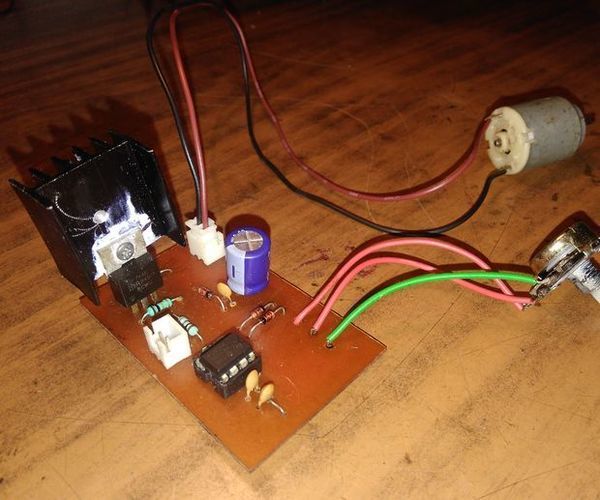
Variable Motor Speed Controller
"In this project I will show you an efficient and common way how to control the speed of motor & I will also demonstrate how easy it can be to build a Variable Motor Speed Controller with the help of an IC 555. Let's get started! " [...]
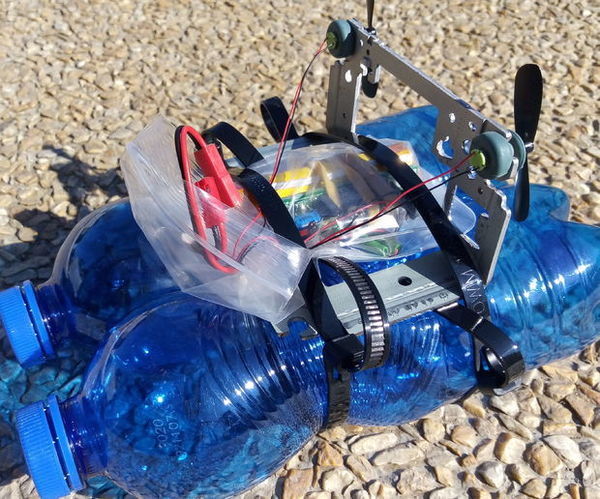
UChip RC Boat Out of Plastic Bottles and CD-ROM Player!
"AfterI implemented the hardware and software to connect my drone Radio to motors/servos, the next step was to make a good use of the hard work done and build my own RC toy, which is...a Boat! Since I am not a mechanical engineer, I opted for the easiest approach I could imagine of, in order to build my Boat: Recycle everything I got, making the best out of it! I am proud to say, this time I exceeded my expectations! Therefore, I want to share with you my project and here are the few steps necessary to build your own racing scrap boat! Bill of materials: Electronics, you can build your own electronics following my previous guide or use someone else project. Mine includes: - 1 x uChip: Arduino IDE compatible board - 1 x Tx-Rx Radio system: any radio system with cPPM receiver is good - 2 x Motor driver: with 1x47uF@16V capacitor, 3xDiodes (fast recovery), 1x5.1V zener, 2 nMOSFET (VGTH ~ 2V) and 4 resistors you can easily solder yours." [...]

Build a Cloud-Connected WiFi Doorbell
"If you are a Maker like me, and there is a good chance you are since you are here on Instructables reading this project, you may have the following problem. If you are working in your office/workshop/garage or elsewhere in your home, and someone rings your doorbell, it can be difficult to hear the doorbell ring. You might be using power tools or have other machines that make a lot of noise. You might be listening to headphones or a Bluetooth speaker. You might just be far away from your doorbell chime. So, in this Instructable, we will build an small IoT device that connects to your doorbell and delivers a notification to your phone when someone rings your doorbell." [...]

Nema17 Stepper Motor Microstepping
"So this will be my first instructable, and I'm sure I'll need to update things as I find issues with it. I'll try and fix things as time allows and with feedback. Thanks! All the information I found searching for steppers and micro stepping was either too basic, or went into so much detail my eyes glossed over after a few pages. This is the result of my own take on steppers and micro stepping. I've put together a simple Nema17 Stepper Motor setup that will demonstrate micro stepping and explain just a bit how things work and some sample code to see it in action." [...]

Simon & Whack-A-Mole
"In this project i created a classic Simon game with a simple Whack-A-Mole. i based this on this Instructable: https://www.instructables.com/id/Simon-Whack-a-Mol... This project was actually triggered by finding big colourful buttons on AliExpress... This is a very simple project, it can be done in many different ways (just look it up in this site...) It is fun to make, great to show your friends, helps you find out which were 80s/90s kid and who was not :-) i added all you need to make this project, except the box. " [...]

RGB LED Cube With Bluetooth App + AnimationCreator
"This is an instructable on how to build a 6x6x6 RGB LED (Common Anodes) Cube controlled by a Bluetooth App using an Arduino Nano. The entire build is easily adaptable to a say 4x4x4 or 8x8x8 Cube. This project is inspired by GreatScott. I decided to go for a more sophisticated build using bigger leds (8mm), with less distance + adding Bluetooth communication which makes adding new functions so much easier and also adds the capability of building an app to control the cube. This also allows me to e.g. code a Snake Game (3rd showcase video at the end)." [...]
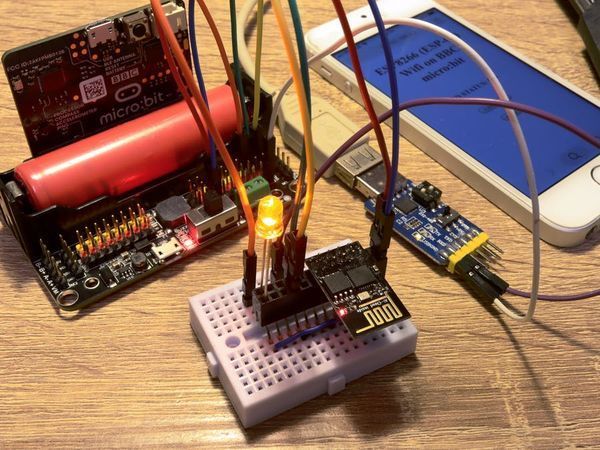
WiFi Web Server on BBC micro:bit and ESP-01 (ESP8266)
"Create a micro:bit web server via AT commands which can respond to web browser requests over WiFi. The project allows you to control your BBC micro:bit via WiFi, by using a cheap ESP-01 (ESP8266) module. The micro:bit would generate an HTML web page for the user with control buttons on it. The web page can be accessed from your computer or smartphone without using any apps. The micro:bit talks to the ESP-01 via AT commands, to set up a web server in either station or AP mode. These commands are in the factory firmware of ESP-01s." [...]
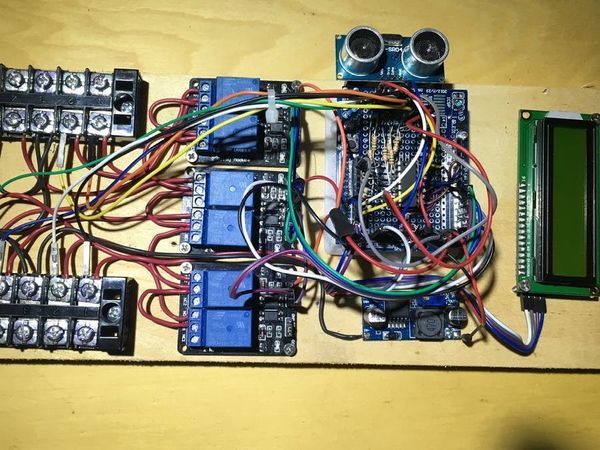
Smart Battery Charger Multiplexer with Smart Display
"Use a smart battery charger on up to 6 batteries - wave your hand to turn display on and check charging. Living in the North East if you have an older car or a boat, or lawn mower or other vehicle that starts with a battery that you don’t drive or use in bad weather (some call it winter) you have to decide what to do with the batteries each season. If you have one or two it’s pretty easy – you can get a trickle charger. The cheap simple ones are under $15 – but they are simple – no battery feed back or monitoring, they just put just over 13 volts to the battery. A better choice would be one of the smart chargers – they usually have regular higher/faster charge and a snow or trickle charge that adjusts it’s output based on the battery voltage and condition. They work very well – Harbor Freight has one for $39 – of course $29 on sale which is almost always." [...]

Basic Transistor Tester
"In this instructable I will be showing you how to create a Simple Transistor Tester! " [...]
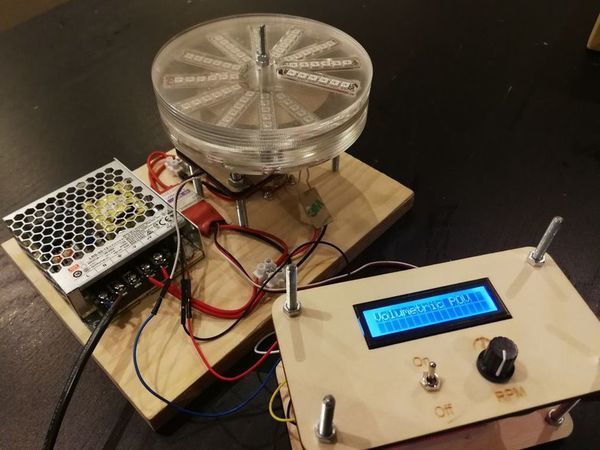
Transparent 3D Volumetric POV
"A few weeks ago I received a last minute invite to participate in a PhabLabs Hackathon at Science Centre Delft in the Netherlands. For an enthusiastic hobbyist like me, who can normally spend only a limited amount of time on tinkering, I saw this as a great opportunity to schedule some dedicated time to turn one of my many ideas, within the scope of the Hackathon: Photonics, into an actual project. And with the great facilities in the Makerspace at Science Centre Delft it was just impossible to turn down this invite. One of the ideas I already had for a while related to photonics was that I wanted to do something with Persistence of Vision (POV). There are already tons of examples available online of how to build a basic POV display using some basic components: microcontroller, old fan/hard disk/motor and one string of leds connected perpendicular to the axis of the rotating device. With a relatively simple setup you can already create an impressive 2 dimensional image, e.g." [...]

Huge Flexible Transparent LED Matrix Under $150. Easy to Make.
"I want to start by saying that I am not a professional, I dont have any degrees in electronics. I simply enjoy working with my hands and figuring things out. I say that to be encouraging to all you nonprofessionals like me. You have the ability to do anything like this, all it takes is patience and research! My research was done through this website and YouTube. I have seen LED matrix's before like this one on Youtube and it sparked such excitement for me that I started thinking I can make something like that." [...]
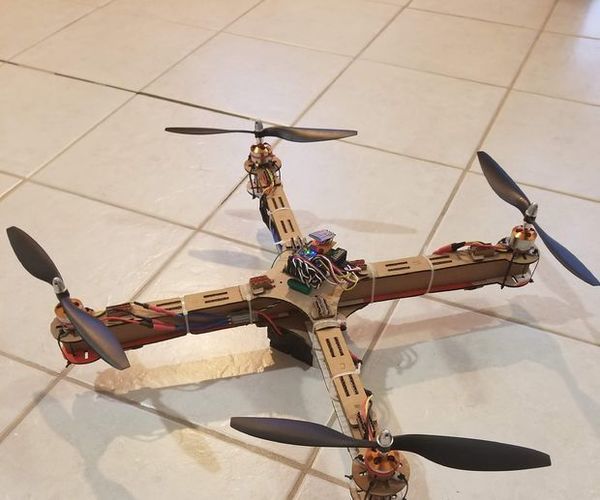
The Ultimate Guide to Building a Quadcopter From Scratch
"This project started all the way back when I was in 6th grade and completely new to electronics, when I thought to myself, "Hey, let's build a drone....it shouldn't be that hard......right?" Yea, guess what, it's hard. Almost 4 years later, this project is coming to a close, and along the way, I have built my engineering knowledge from the ground up, and I will be sharing my knowledge with everyone in the Instructables community so that if another 6th grader were to find themselves upon this Instructable, I hope they will not spend nearly as much time trying to build a drone, but still acquire the same knowledge that I have. This drone tutorial go cover how I built my drone as well as go deep into the nitty-gritty aspects from the construction of the frame all the way to the code. I hope that by reading this instructable, you will be able to fully understand and admire the concepts and theory behind quadcopter building. I would like to thank and recommend some Youtube channels that I have watched and learned from which helped arm me with the knowledge that I have today: - Joop Brokking: https://www.youtube.com/user/MacPuffdog (He has an AMAZING playlist for drone building) - Great Scott: https://www.youtube.com/user/greatscottlab (Great electronics information) - Electronoobs: https://www.youtube.com/channel/UCjiVhIvGmRZixSzup... (Clear explaination of PID) - Electroboom: https://www.youtube.com/user/msadaghd (Funny and also great electronics information) Without further ado, here's the breakdown of this instructable." [...]

Solder Reflow Oven (for Less Than $100)
"A solder reflow oven is a very useful piece of equipment for boards with a large quantity of surface mount components or making batches of surface mount boards. The reason that I made this was because I had to make several boards containing around twenty parts each. It was too much of a pain to try and solder them by hand, considering all I own is a convention soldering iron. Looking around I saw that actual solder ovens were out of my budget, so I ended up modifying a twenty dollar toaster oven from Amazon. All in all this cost me about $50 to make, and I was able to use parts that I already had sitting around. It made my life much easier to be able to use the oven to do the soldering instead of a traditional iron." [...]

Coke Machine Level Detector - Now With Speech!
"This project is an remix of my Coke Machine Can Level detector, (https://www.instructables.com/id/Coke-Machine-Can-Level-Detector/) with new sensors, and the addition of spoken sound! After I made my first level detector, I added a piezo buzzer to give audible feedback for the visually impaired. It worked, but was kind of, meh What did each particular sound mean? It needed explaining so wasnt too practical as a solution. I left it and went off to do other things. Recently, I made some Portal Turrets that used the DFPlayer Mini MP3 player (or MP3-TF-16P)." [...]
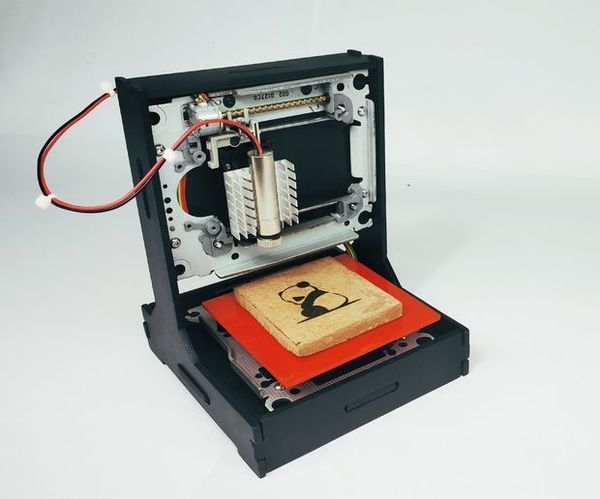
DIY Arduino Mini Laser Engraver
"Hello Guys Whatsup, In this instructable, I am making an Awesome mini laser engraver from old DVD writers. It's an amazing machine. You can use this laser engraver machine to make any kind of design, logo, art on the surface like WOOD, MDF, PLYWOOD, VNYL Paper. It's little difficult to make a high-resolution laser engraver from DVD writer. But I tried my best to make a pretty close one. In this instructable, I am going to show you the entire procedure of how I made this DIY Laser Engraver." [...]

FindyBot3000 - a Voice Controlled Organizer
"As any maker can attest, over the years, one collects a lot of parts. Perhaps it all started with a few resistors and LEDs, a breadboard, and an Arduino. But soon there were motors and motor drivers, IR rangefinders and tactile switches. Accelerometers, microphones, heatshrink tubes, potentiometers, relays, hookup wire, all those things salvaged from that printer you took apart... and the list goes on. Now, organizing such a collection of goodies is no easy task. Some may have turned to baggies, for others, boxes." [...]

Persistence of Vision (PoV) Display Using Arduino
"Time for a fun-filled, easy-peasy Japan-easy to make a project! Today, were going to show you how to make an LED POV Display. POV, an acronym for the persistence of vision, is a kind of optical illusion in which a visual image seems to persist even when the light from it ceases to enter our eyes and this makes it super cool! You can display any text or image that you want to in the display. Sounds awesome, right? So, why are you still here?!" [...]

Arduino Based Wireless (RF) Weather Station Network
"In this DIY guide I will show you how to make your own wireless weather station! My communication protocol will allow you to have up to 10 sensor stations in your wireless network, but you can change and extend it up to 254 stations! The RF technology and the module that we used will allow you to have a long range distance between your sensors and master station that will have in your room. You can power on your sensor stations with 5V battery (or even with 3.7V) or a solar panel system! Every "Sensor Station" can have a: Photocell / photoresistor Light sensorDHT-22/DHT11 Temperature/Humidity SensorDS12B20 Waterproof Temp SensorIn this project I decided to make my own PCB that is based on Arduino UNO microcontroller - Atmega328p. Bellow you will find the electronic schematic with PCB layout so you can easily produce it!" [...]
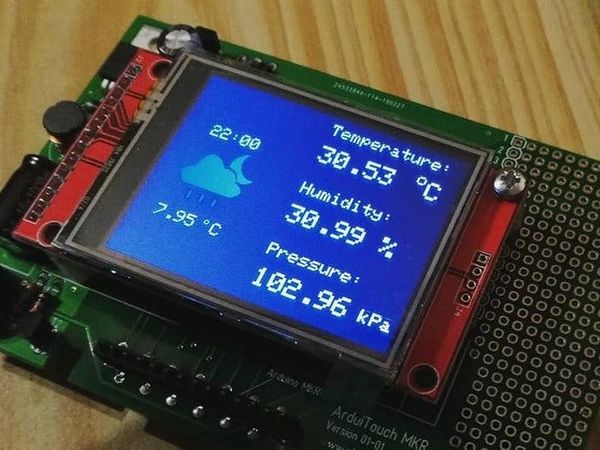
Arduino MKR Weather Monitor
"Simple weather station with WiFi forecast and measuring of temperature, humidity, air pressure via MKR ENV shield. We got some of the brand new MKR ENV shields some days ago. These shields have several sensors (temperature, air pressure, humidity, UV.... ) on board - a good collection to create a simple weather station together with our ArduiTouch MKR kit. We've used an Arduino MKR 1010 with WiFi as main board to receive some weather information for a simple forecast by openweather map.org. So the display of the ArduiTouch will show a simple forecast and outside temperature together with the measured indoor temperature, air pressure and humidity. " [...]

Fizzle Loop Synth V3 (555 Timer)
"This is my 3rd Fizzle Loop Synth circuit and it builds on the previous 2 which can be found here and here. The heart of the synth is 3, 555 Timer IC's which are used to make some really interesting beeps and boops. The difference between this version and the others is; I have reduced the number of IC's down to 3 (version 2 have 4! ), the rhythms and sounds you can make from this version are in my opinion are better and lastly, there is a drum sound option which gives some really cool beats. I also have shrunk this synth into a pocket sized one. By placing some of the capacitors directly onto switches and shrinking the prototype board down, I managed to stuff all of the pots, switches and components into a small flashlight case." [...]

HS101: A high quality, and Cheap DIY Oscilloscope
"One of the most interesting thing about being a maker is you never get tool-stranded, with the right components, makers tend to have the ability to build makeshift tools on the go. Today, we will take a look on how to build a cheap version of one of the most important tools for any electronics engineer or maker; The Oscilloscope. The Oscilloscope is a test instrument used for the visualization and observation of varying signal voltages, usually as a two-dimensional plot with one or more signals plotted against time. They are used in the design and debugging of electronic devices to view and compare waveforms, determine voltage levels, frequency, noise and other parameters of signals applied at its input as it changes with time. This makes Oscilloscopes a very important tool on the desk of an electronics engineer or maker. However, Oscilloscopes are quite expensive, they cost between $45 – $100 for a small oscilloscope and above $300 for advanced oscilloscopes, which puts them beyond the reach of basic users." [...]
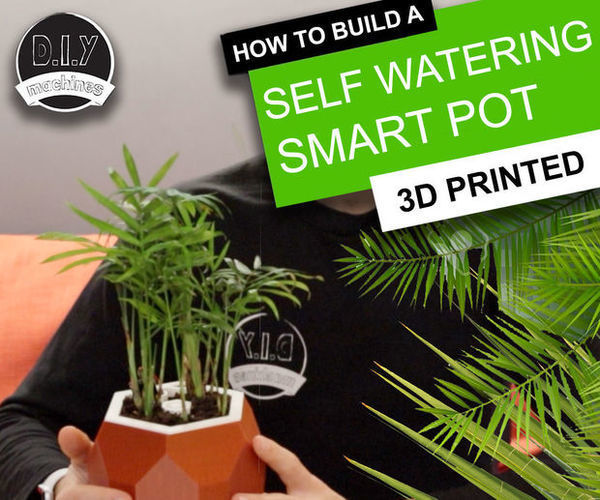
Automatic Smart Plant Pot - (DIY, 3D Printed, Arduino, Self Watering, Project)
"Sometimes when we go away from home for a few days or are really busy the house plants (unfairly) suffer because they are not watered when they need it. This is my solution. It's a Smart Plant Pot which includes: Inbuilt water reservoir. A sensor to monitor the moisture level of the soil. A pump to pump water to the plant when required. A water level monitor in the water reservoir." [...]

Contactless Voltage Detector
"3 Ways to Build Your Own Contactless Voltage Detector For Less Than a Dollar When electricity is not properly handled, it results in electrical shocks with a nasty experience; which is why safety must come first when working with electricity or electrical devices. In order to avoid injury, prior to starting work on an electrical box such as an AC mains switch-board or a power supply, you must first verify there is no AC voltage. It is really hard to completely isolate a device from the main supply; so, how can you be sure that there's no voltage remaining? " [...]

Arduino Nano 4x 18650 Smart Charger / Discharger
"This is my Arduino Nano 4x 18650 Smart Charger / Discharger Open Source Project. This unit is powered by 12V 5A. It can be powered by a computer power supply. The History I wanted to make a smart Arduino powered charger, discharger battery tester that could have a barcode scanner that scanned barcodes on batteries and input all the data into an Online Database Portal. This would allow me to correctly sort and analyze trends in all my reclaimed lithium batteries. Version 1: I originally started out using a single sided PCB milled out with my CNC." [...]
That's all Folks!


